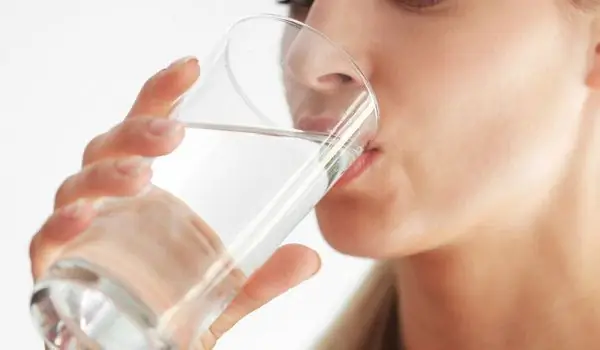2025 Author: Jasmine Walkman | [email protected]. Last modified: 2025-01-23 10:18
It is good to know how to clean fruits and vegetables before cooking them so that you can turn them into delicious and at the same time safe dishes.
Lettuce, for example, does not wash well just under running water. It is best to divide it into separate leaves to immerse in a deep bowl of water (preferably with a little soda or vinegar in it).

After waiting about two or three minutes, take them out one by one and wash them under running water. At the bottom of the vessel you will find a handful of earth, and insects and small worms will swim in the water.
Radishes should first be stripped of their roots and leaves, and then thoroughly washed under running water, vigorously rubbing them with a brush or hand. This removes the pieces of soil that have stuck to them.
Spinach, nettle, as well as dock, should be separated from the roots and distributed on separate leaves. They are washed in the same way as lettuce leaves.

When cleaning nettles, it is better to wear cloth gloves if you do not want to get the characteristic rash. Fresh onions and garlic are first cleaned of wilted leaves and roots, and then washed well.
Garlic heads are divided into cloves. They are peeled, the yellow stains are scraped off and the cloves are washed with water.
Do not neglect garlic just because of its smell, as it is very useful. Chew two coffee beans and your mouth will not smell it.
To clean onions on the heads, use some tricks. Leave the heads in the freezer for a few minutes if you don't want tears to flow. Another option is to rinse it with ice water after each cut with the knife.

When cleaning aubergines, first remove the stem and its lower hard part. Then wash the vegetables well and after cutting them into pieces of the desired thickness, salt it. After an hour, squeeze the juice, which contains the harmful substance solanine.
When using sterilized fruits and vegetables in jars, be sure to wash the jars, as their surface is usually heavily soiled.
When cooking sterilized peas, tomatoes, mushrooms, etc., do not throw away the juice. It contains valuable substances and can be used to make soups, dishes and sauces.
Frozen vegetables are not thawed, but thrown into boiling water or a hot dish. The frozen fruits are thawed carefully so that all their juice does not run out.
Recommended:
When Does Meat Become Harmful?

Discussions about whether meat is more useful or more harmful to human health are not from yesterday. If meat consumption is reduced to 2-3 times a week, 45,000 lives could be saved in the UK alone. This was stated by doctors and specialists from the environmental organization Friends of the Earth, quoted by the Guardian newspaper.
Food Will Not Become More Expensive For The Holidays

The chairman of the State Commission on Commodity Exchanges and Markets Eduard Stoychev said that food prices will not rise as the holidays approach, as was the case last year. According to Stoychev, an increase in the price of basic food products is unlikely due to low consumption in the last year.
Tomatoes And Potatoes Have Become More Expensive, Salads Have Become Cheaper

There is a decrease in prices for eggs and fresh green salads after the Easter holidays, according to the State Commission on Commodity Exchanges and Markets. There are two objective reasons for this - on the one hand, most of the retail chains woke up with large unsold quantities of these products, which forced them to lower their prices so that they could sell them before their expiration date.
New Labels For Bread - Will Not Become More Expensive

From next year, new labels will be placed on the bread, the font of which will be larger and will carry more information about the quality and shape of the product. The news was announced by the chairwoman of the Regional Union of Bakers and Confectioners in Veliko Tarnovo - Jeni Sapundjieva.
Why Does Water Have Healing Powers And How Does It Affect Us?

Since ancient times, water has been used for medicinal purposes. It occupies an important place in Chinese medicine - the Chinese used water to restore the disturbed harmony in the body. In Egypt, they built special temples where people bathed, drank and performed procedures.

